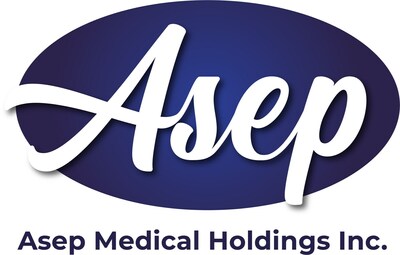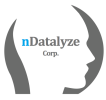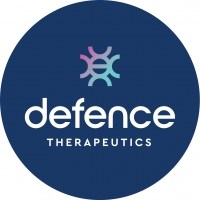Financing
Asep Inc. Obtains Exclusive Worldwide License from the University of British Columbia for Ground-breaking Medical Device Coating Technology
Asep Inc. Obtains Exclusive Worldwide License from the University of British Columbia for Ground-breaking Medical Device Coating Technology
PR Newswire
VANCOUVER, BC, July 31, 2023
VANCOUVER, BC, July 31, 2023 /PRNewswire/ – Asep Medical Holdings I…

Asep Inc. Obtains Exclusive Worldwide License from the University of British Columbia for Ground-breaking Medical Device Coating Technology
PR Newswire
VANCOUVER, BC, July 31, 2023
VANCOUVER, BC, July 31, 2023 /PRNewswire/ – Asep Medical Holdings Inc. (“Asep Inc.” or the “Company“) (CSE: ASEP) (OTCQB: SEPSF) (FSE: JJ8) is pleased to announce that, as of July 21, 2023, it has completed the final milestone in its acquisition of SafeCoat Medical Inc. (“SafeCoat“) and entered into an exclusive worldwide license agreement (the “Agreement“) with the University of British Columbia (“UBC“), through its subsidiary SafeCoat, for the use, development and commercialization of a ground-breaking medical device coating technology (the “Technology“).
Device-related infections are responsible for a quarter of all healthcare-associated infections and are difficult to treat with conventional antibiotics due to the adherence and growth of bacterial biofilms on the surface of the device. Catheters are an excellent example of medical instruments that can cause serious infections. According to the Center for Disease Control and Prevention (CDC), approximately 90% of serious infections caused by catheters are associated with central venous catheters (CVCs). Not only are CVC infections serious for the patient, but they are also costly for hospitals as the cost per infection is estimated to range from USD $34,508 to $56,000. This represents an annual cost for caring for these patients to be approximately USD $296 million — $2.3 billion in the US alone.1
The Technology encompasses two critical aspects to prevent device-related infections, which cause an additional cost of $57,0002 per patient and require replacement of the infected device. The coating includes an antimicrobial peptide conjugated to the surface of the device to kill bacteria and anti-fouling self-assembling polymers that prevent the dead bacteria from binding to the device surface and masking the killing effect. This coating technology can be applied to various surfaces, including glass, plastic and titanium, on surgical implants, catheters, pacemakers, stents, artificial limbs and organs, and contact lenses. Feasibility has been demonstrated in animal models. Device-related infections are responsible for a quarter of all healthcare-associated infections2.
According to Research and Markets Medical Device Coatings: Global Markets report, the estimated value of medical device coatings in 2022 was USD $5.8 billion and is estimated to grow to USD $9.7 billion by 2027, representing a compound annual growth rate (CAGR) of 10.9%3. The report also provides compelling reasons for the market’s growth:
- An ageing population is driving an increased demand for medical devices
- Advancements in technology have led to the development of new medical devices that require coatings
- The rising incidence of chronic diseases, such as heart disease and diabetes, is driving demand for medical devices that can be used for long-term treatment
- Along with scientific and technological advances, the FDA and other regulatory bodies have developed strict requirements to increase patient safety by improving the safety and performance of medical devices, which has led to an increased demand for coatings that can meet those requirements
- Medical device coatings can be cost-effective in the long run by prolonging the life of the device or by reducing the need for frequent replacement4
“We are excited to take this promising new technology forward through SafeCoat Medical and the exclusive worldwide license from UBC. We anticipate that this transaction will create significant new market opportunities as we tackle the problem of maintaining sterile surfaces on medical devices and implants,” stated Tim Murphy, Asep Inc.’s Chief Operating Officer.
Pursuant to the Agreement, Asep Inc. will hold 88% of the issued and outstanding shares of SafeCoat. UBC and the non-waiving inventors of the Technology will collectively own the remaining 12% of the issued and outstanding shares of SafeCoat in consideration for the exclusive license grant. Dr. Robert E. W. Hancock, Founder and CEO of Asep Inc., is one of the four non-waiving inventors of the SafeCoat Technology.
The term of the Agreement will expire on the later of 20 years from the grant of the license and the expiry date of the last of the patents relating to the Technology. In consideration for the granting of the license, SafeCoat will pay a royalty to UBC on the revenue generated from the commercialization of the Technology products by SafeCoat at a rate of 3.75% and at staged higher rates on sub-licenses as particularly set out in the Agreement. SafeCoat will also pay annual fees to UBC on January 1st of each year as follows: $5,000 from 2024 to 2026, $10,000 from 2027 to 2029, $15,000 from 2030 to 2032, $50,000 from 2033 and each successive year thereafter. SafeCoat will also make a milestone payment of $150,000 to UBC upon each product derived from the Technology receiving 510(k) clearance or PMA (or equivalent if outside the U.S.) approval. Certain patent management fees are also payable by SafeCoat to UBC.
Dr. Hancock, the CEO and a director of the Company is a party to the License Agreement as he is one of the non-waiving inventors; as such, the portion of the transaction with Dr. Hancock is considered to be a “related party” within the meaning of Multilateral Instrument 61-101 Protection of Minority Security Holders in Special Transactions (“MI 61-101“) and the proposed issuance to Dr. Hancock of common shares of SafeCoat Medical Inc., a subsidiary of the Company, is considered to be a “related party transaction” within the meaning of MI 61-101. These related party transactions are exempt from the valuation requirement of MI 61-101 by virtue of the exemption contained in section 5.5(b) as the Company’s shares are not listed on a specified market and from the minority shareholder approval requirements of MI 61-101 by virtue of the exemption contained in section 5.7(a) of MI 61-101 in that the fair market value of the consideration of the shares to be issued to each related party does not exceed 25% of the Company’s market capitalization.
ABOUT ASEP MEDICAL HOLDINGS INC.
Asep Medical Holdings Inc. (www.asepmedical.com) is dedicated to addressing the global issue of antibiotic failure by developing novel solutions for significant unmet medical needs in human medicine. The Company is a consolidation of three existing private companies, all with technology in advanced development — Sepset Biosciences Inc. (proprietary diagnostic tools to enable the early and timely identification of sepsis), ABT Innovations Inc. (broad-spectrum therapeutic agents to address multi-drug resistant biofilm infections), and SafeCoat Medical Inc. (an antibacterial peptide medical device coating technology).
Sepset Biosciences Inc. (www.sepset.ca) is in the final stages of preparation for clinical studies and commercialization of an in vitro diagnostic test that involves a patient gene expression signature that helps assess the development of severe sepsis, one of the significant diseases leading to antibiotic failure since antibiotics are the primary initial treatment for sepsis. Sepsis was responsible for nearly 20% of all deaths on the planet in 2017 and essentially all deaths due to COVID-19 and other pandemics. The SepsetER test is a blood-based gene expression assay that is straightforward to implement, and results are obtained about an hour after taking a blood sample in the emergency room or intensive care unit. This proprietary diagnostic technology differs from current diagnostic tests, enabling the risk assessment for progression to severe sepsis within ~60 minutes of initiating the test. Bacterial culture, the gold standard, provides results after ~15 hours but can be as long as three days. Asep Inc. believes its test will enable critical early decisions to be made by physicians regarding appropriate therapies and thus reduce overall morbidity and mortality due to sepsis.
ABT Innovations Inc.’s (www.abtinnovations.ca) peptide technology covers a broad range of therapeutic applications, including bacterial biofilm infections (dental, wound, sinusitis, skin, medical device infections, chronic infections, lung, bladder, ear-nose and throat, orthopaedic, etc.), anti-inflammatories, anti-infective immune-modulators and vaccine adjuvants. The company is in the pre-clinical development phase with promising data for the first three indications.
SafeCoat Medical Inc.’s (www.safecoatmedical.com) technology encompasses anti-fouling self-assembling polymers combined with conjugated antimicrobial peptides, which can be applied to various surfaces as antimicrobial and anti-fouling coatings. In particular, the invention relates to coatings that may be applied to multiple medical devices and implants, and feasibility has been demonstrated in animal models. The company’s expertise also encompasses the methods for manufacturing and applying these anti-bacterial coatings.
FORWARD-LOOKING STATEMENTS —
This news release contains certain “forward-looking statements” within the meaning of such statements under applicable securities law. Forward-looking statements are frequently characterized by words such as “anticipates,” “plan,” “continue,” “expect,” “project,” “intend,” “believe,” “anticipate,” “estimate,” “may,” “will,” “potential,” “proposed,” “positioned” and other similar words, or statements that certain events or conditions “may” or “will” occur. These statements include but are not limited to the successful clinical testing of our Sepsis in vitro diagnostic test and its intended filing for regulatory market authorization; the Company not receiving regulatory market authorization as planned or at all; the undertaking of pre-clinical studies on our lead therapeutic, with the expectation that this will lead to fast-track clinical trials; the timeframe for identification of sepsis with the company’s products; the potential opportunities for the generation of revenue; the therapeutic benefits of the company’s products; and other statements regarding the company’s proposed business plans. Various assumptions were used in drawing conclusions or making the predictions contained in the forward-looking statements throughout this news release. Forward-looking statements are based on the opinions and estimates of management at the date the statements are made and are subject to a variety of risks including the risk that the company’s products may not perform as expected; that the company may not receive the requisite regulatory market authorization or results of testing; the Company’s testing of the products may not be successful and market authorization may not be obtained in the estimated timelines or at all; the company may not be able to generate revenue from its products as expected or at all; the market for the company’s products may not be as described in this news release; and various other risk factors identified in the Asep Medical Inc.’s prospectus dated November 9, 2021, and in the company’s management discussion and analysis, available for review under the Company’s profile at www.sedar.com and uncertainties and other factors that could cause actual events or results to differ materially from those projected in the forward-looking statements. Asep Medical Inc. is under no obligation and expressly disclaims any intention or obligation to update or revise any forward-looking statements, whether as a result of new information, future events or otherwise, except as expressly required by applicable law.
|
ENDNOTES 2 Eby EL, Bengtson LGS, Johnson MP, Burton ML, Hinnenthal J. Economic impact of cardiac implantable electronic device infections: cost analysis at one year in a large U.S. health insurer. J Med Econ. 2020 Jul;23(7):698-705. doi: 10.1080/13696998.2020.1751649. Epub 2020 Apr 22. PMID: 32255386 3. Research and Markets: Medical Device Coatings Market 2023 4. Research and Markets: Medical Device Coatings Market 2023 |
View original content to download multimedia:https://www.prnewswire.com/news-releases/asep-inc-obtains-exclusive-worldwide-license-from-the-university-of-british-columbia-for-ground-breaking-medical-device-coating-technology-301891873.html
SOURCE ASEP Medical Holdings Inc.
acquisition
cse
cse-asep
asep-medical-holdings-inc
asep medical holdings inc
press-release

nDatalyze Corp. (“NDAT” or the “Corporation”) (CSE:NDAT) (OTC:NDATF) Announces an Expansion of its YMI Validation Project
Calgary, Alberta – TheNewswire – October 17, 2023 – nDatalyze Corp. (“NDAT” or the “Corporation”) (CSE:NDAT) (OTC:NDATF) announces an expansion…
NervGen Pharma Appoints John Ruffolo to Board of Directors
Extensive experience in private equity, venture capital and advising high growth, innovative companiesBrings personal experience and knowledge of spinal…
Defence’s Delivery of Encapsulated AccuTOX(TM)-Chitosan Nanoparticles Triggers Complete Tumor Regression in Animals with Pre-Established Solid Lymphoma
Vancouver, British Columbia–(Newsfile Corp. – October 17, 2023) – Defence Therapeutics Inc. (CSE: DTC) ("Defence" or the "Company"), a Canadian biopharmaceutical…














